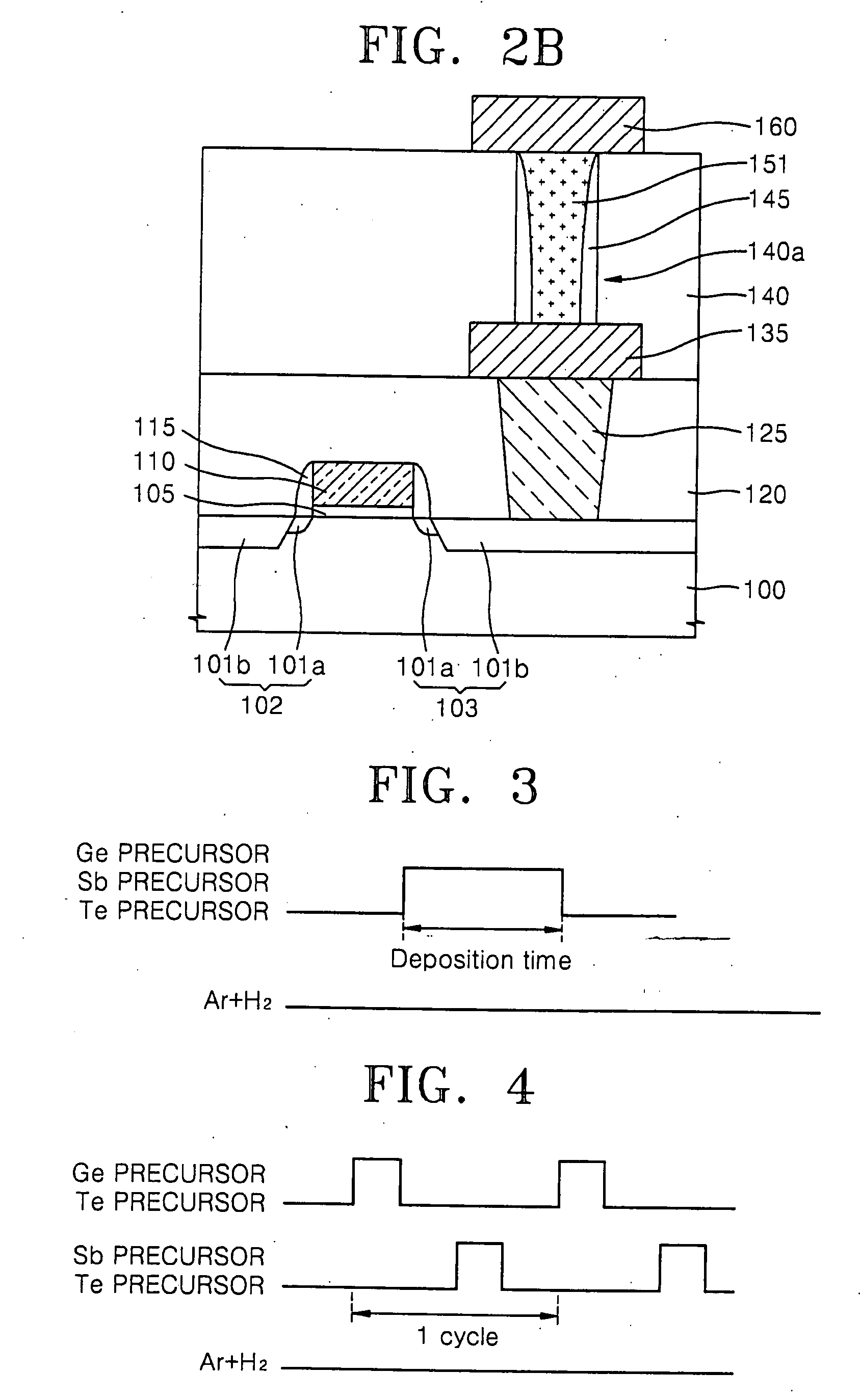Metal precursors for low temperature deposition and methods of forming a metal thin layer and manufacturing a phase-change memory device using the metal precursors
a technology of metal precursors and low temperature deposition, which is applied in the direction of instruments, germanium organic compounds, antimony organic compounds, etc., can solve the problems of preventing the integration of the device, preventing the fine contact of the phase change material layer, and preventing the expansion of the devi
- Summary
- Abstract
- Description
- Claims
- Application Information
AI Technical Summary
Benefits of technology
Problems solved by technology
Method used
Image
Examples
synthesis example 1
Synthesis of Ge Ring Compound
[0075]24.31 g of metal magnesium (1000 mmol) was suspended in 500 mL of diethyl ether in a reactor of 2 L. After a water bath was installed in the reactor, 130.7 g (500 mmol) of 1,4-dibromobutane was slowly added to the magnesium diethyl ether suspension. Here, the addition speed of 1,4-dibromobutane was adjusted such that the temperature of the reaction solution was maintained at 25° C. After the addition of 1,4-dibromobutane was completed, the reaction solution was agitated for 3 hours at a room temperature. Then 53.6 g (250 mmol) of germanium tetrachloride (GeCl4), which was diluted in 100 mL of diethylether, was slowly added to the reaction solution and then the reaction solution was agitated for 16 hours at a room temperature and then the reaction was completed. After the reaction was completed, the reaction solution was filtered at a reduced pressure to obtain a colorless filtered solution. The colorless filtered solution was fractionally distilled...
example 1
Examination Example 1
[0076]FIG. 6 presents a graph showing 1H-NMR analysis of the liquid compound manufactured according to the methods described above in Synthesis Example 1. The 1H-NMR analysis was carried out in C6D6, at 25° C. Referring to FIG. 6, a peak at 1.59 ppm denotes a hydrogen (Ge—CH2CH2CH2CH2—) that is bonded to a carbon that is not bonded to Ge in Formula 3, and a peak at 0.83 ppm denotes a hydrogen (Ge—CH2CH2CH2CH2—) that is bonded to carbon that is bonded to Ge in Formula 3. Accordingly, 5-germaspiro[4,4]nonane represented by Formula 3 can be synthesized by the above Synthesis Example 1.
example 2
Examination Example 2
[0077]FIG. 7 presents a graph showing differential thermal analysis (DTA) of the liquid compound, i.e., the Ge ring compound represented by Formula 3, manufactured according to methods described in Synthesis Example 1. Referring to FIG. 7, the Ge ring compound represented by Formula 3 is thermally decomposed at about 200° C., and thus, generates Ge.
PUM
| Property | Measurement | Unit |
|---|---|---|
| temperature | aaaaa | aaaaa |
| temperature | aaaaa | aaaaa |
| temperature | aaaaa | aaaaa |
Abstract
Description
Claims
Application Information
 Login to View More
Login to View More - R&D
- Intellectual Property
- Life Sciences
- Materials
- Tech Scout
- Unparalleled Data Quality
- Higher Quality Content
- 60% Fewer Hallucinations
Browse by: Latest US Patents, China's latest patents, Technical Efficacy Thesaurus, Application Domain, Technology Topic, Popular Technical Reports.
© 2025 PatSnap. All rights reserved.Legal|Privacy policy|Modern Slavery Act Transparency Statement|Sitemap|About US| Contact US: help@patsnap.com



